The Surrey Flying Services AL.1 was a single-engined side-by-side two-seat training biplane, built at a UK flying club in 1929. Only one was built, but it was flying until the outbreak of war in 1939 and remains in storage.
The Nakajima P-1 was a 1930s Japanese single engine, single seat biplane intended for night mail flights, derived from the Nakajima E4N3 Naval reconnaissance seaplane. Nine were built.
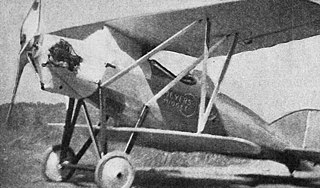
The Meyers Midget was a one-off small, low-powered, sporting single-seat sesquiplane, designed and built in the United States in 1926, incorporating several innovative structural features.
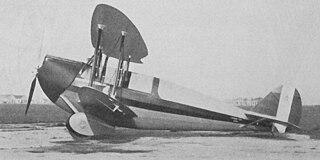
The Caproni Ca.125 was a single-engine, tandem two-seat, touring biplane built in Italy in 1933. It could be operated either as a landplane or seaplane.

The Fokker D.XII was a Dutch single seat, single engine fighter aircraft designed to an American specification which called for the use of a Curtiss D-12 engine, designated PW-7. Despite considerable efforts to improve the airframe, Fokker failed to win the USAAS competition.

The Hanriot HD.15 was a French two seat fighter aircraft fitted with a supercharger for good high altitude performance, built in the 1920s. Three were ordered by Japan but lost at sea during delivery.
The Hanriot HD.20 was a French single seat shipboard fighter aircraft prototype completed in 1923. Only one was built.

The Hanriot H.31 was a single engine, single seat French biplane fighter aircraft built in 1925 to compete in a government programme. It was not successful and only one prototype was completed.
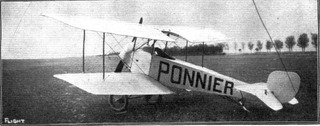
The Ponnier L.1 was an early French biplane single seat scout, built just before World War I. It did not reach production.

The LFG Roland D.XV was a World War I German single seat fighter aircraft, ordered as a test-bed for engine comparisons. It was distinguished from earlier Roland biplane designs by the elimination of flying wires. Two later aircraft, also called LFG Roland D.XV, were completely different designs with slab sided fuselages.
The Siemens-Schuckert B was an unarmed German two seat reconnaissance biplane built early in World War I. A single example was delivered but soon lost.
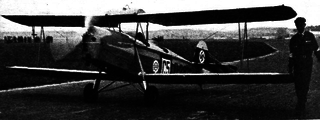
The Gerner G II or Adler-Gerner G II was a German steel framed, low power biplane, intended both for sports and training in the early 1930. Over fifty were built for clubs and private owners.
The Potez 27 was a French reconnaissance biplane first flown in 1924. 175 were operated by the Polish Air Force, most built in Poland by PWS under licence. Others went to Romania, where they were also used as light bombers.
The Caudron C.251 Et-2 was a French tandem seat, open cockpit biplane designed as an intermediate trainer and built in 1931. It did not go into production.
The Caudron C.220 was a two-seat French biplane trainer. Only two were built, using different engines.

The Caudron C.43 was the first French five-engined aircraft, a biplane intended for passenger transport or military use and multi-engined for safety. A development of the three-engined Caudron C.39, it had one tractor configuration engine in the nose and two push-pull pairs between the wings. It was capable of carrying eight passengers but was not developed.
The Weymann W-100, Weymann CTW-100 or Weymann W-100 RBL was a French three seat observation aircraft with a position for the observer within its partially glazed fuselage. Only one was built.

The Aerial Engineering Corporation Standard 6W-3 was a commercial transport modification of the US Standard J-1 biplane military trainer aircraft, with new wings, engine and accommodation for four passengers. First flown in 1925, it was built in small numbers.
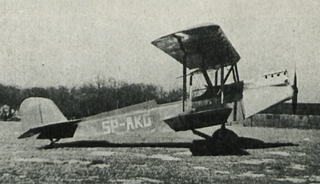
The Kozlowski WK.3 was a one-off Polish biplane trainer. It first flew in 1933 and was later re-engined, serving an aeroclub until the invasion of Poland.
The Vought V-100 Corsair Junior was an attempt to produce a cheaper, multi-purpose, export version of the Vought O2U/O3U observation aircraft it had produced for the United States Navy. It did not sell, and only the prototype was built.












